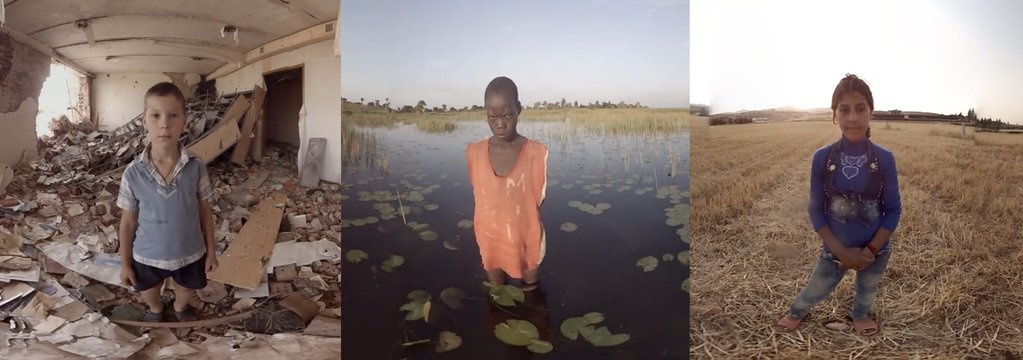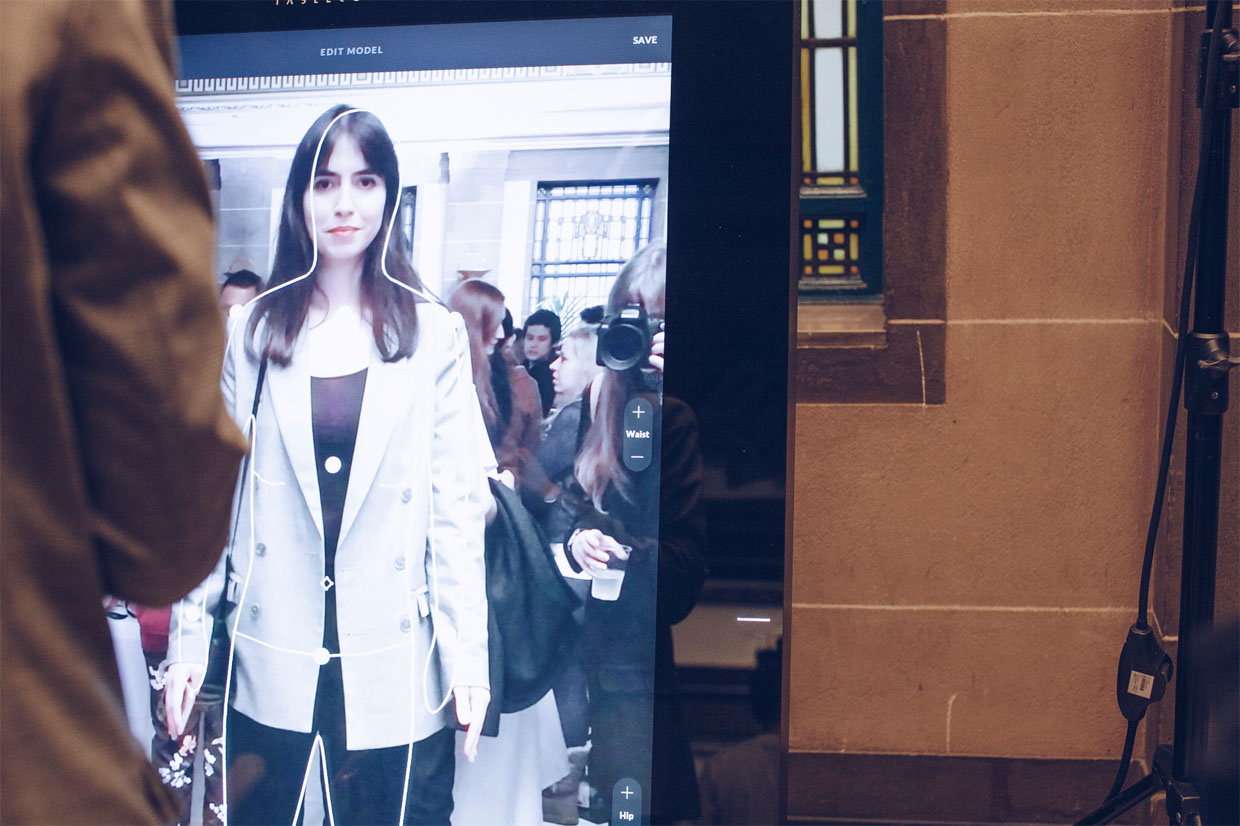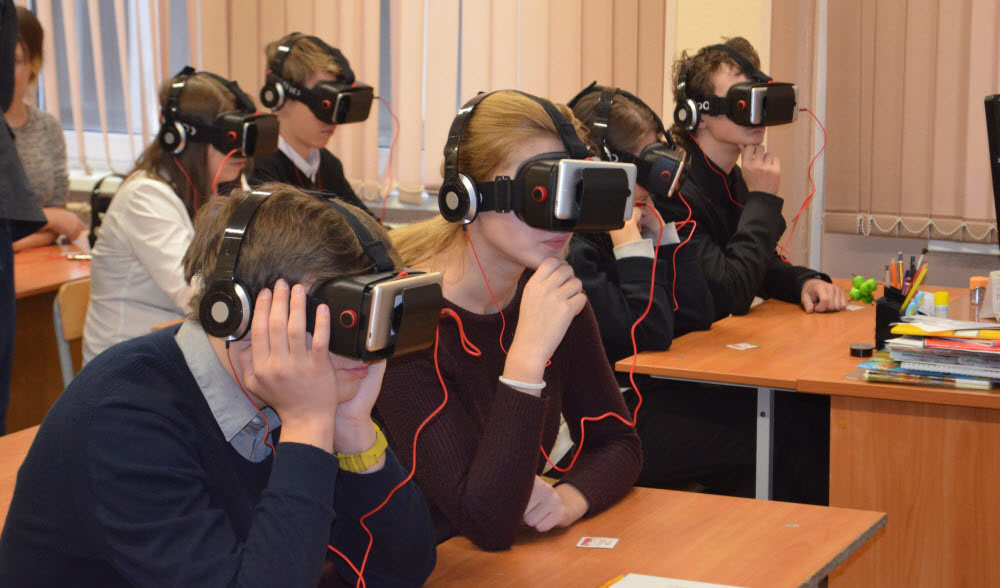5 examples of how VR technologies take over the world
So far, not everyone understood this, but the future of VR technology. Zuckerberg was right when he bought the unknown Oculus Rift for $ 2.3 billion. Recall the rapid development of the mobile application market, and before that - social networks. On the threshold of the same avalanche-like development now stands virtual reality. Some VR glasses are already cheaper than flash drives.

At the same time, wherever you look, everyone talks only about VR games. Yes, of course, horror movies in VR are a new word, and screaming people trying to get past Resident Evil 7 is fun. About 200 thousand developer companies are doing their projects for VR, and some of them will no doubt come up with the next hit and earn millions. But technology is wider than just games. It has the potential to enter into every aspect of our lives, and in many areas it is already successfully doing it.
We have collected 5 real use cases of VR, showing the prospects of this technology.
1. VR stories from the New York Times
If people tell you that virtual reality will replace television series or movies - do not believe it. If the director cannot restrict the area where you need to look, the effect is lost, and the script and characters become trivial. How many players, when in the Half-Life 2 is another conversational scene moving the plot, jump in the corner and pray that the next door will open quickly? Attempts to make a VR movie failed miserably, and the best “VR” film - Hardcore Henry (from a guy from Moscow and Bekmambetov, by the way) was shot on an ordinary GoPro and does not require a headset for viewing. The fact that the camera always looks wherever the director directs it makes the film a film.
VR-cinema has a future, only in a different format - “experiences”, “sensations”. Like 5D cinemas that spread across the country in the 2010s. The effect of personal presence makes any experience a thousand times more interesting. VR event is filmed on special 360-cameras. Already, such surveys can be found on YouTube - this is a parachute jump , but swimming with sharks . Only instead of moving the camera with arrows or a mouse, the user in a virtual helmet simply turns his head. It feels like you're sitting with these guys getting ready to go flying.

This is not fiction and not the distant future. Anyone with a VR-helmet can now watch hundreds of such “impressions” from YouTube for free. The technology is ready, it remains only to recruit loyal users and become truly profitable. The leader in this regard is the New York Times. In 2015, the newspaper, along with Google, created the Virtual Reality team that makes “virtual” films for brands. The idea is very simple. You download the application on a smartphone with iOS or Android. Insert the smartphone in the cardboard box GoogleCardboard (or DaydreamView, if you have money). And that's it! You can spin in place, move your head up and down, turn around at the sound, bend over. And around you will be some cool event. Most often - extreme, such, on which in real life, we would hardly dare, and interesting to get impressions. Well, in order to somehow earn money on this, every second New York Times movie is about a certain company or a specific product. For example, a trip in a MINI car or a tour of the General Electric factory in the United States.
Here's how NYT writes about technology:
Turn up in the shoes of Iraqi soldiers fighting against the army of LIH. Relax on the California coast. Conquer the top of the World Trade Center. Experience the stories in a spectacular 360-degree video format, shot by our award-winning journalists.
The New York Times says that such VR stories have a future, and with enviable regularity adds new videos to their mobile app. “It's time to make 360-video part of the daily news cycle, like text and TV reports.” To achieve even greater coverage of films, the New York Times sends out VR glasses to its subscribers for free. First a million , and then another 300 thousand - to those who have long been subscribed to the Internet version of the newspaper, but have not yet received their copy. Of course, cardboard glasses are not as cool as Oculus Rift and HoloLens, but they still provide a VR impression.

')
Another good (albeit one-time) example of a roller-impression in 2014 arranged for HBO before the start of the new season of “Game of Thrones”. In the mall installed 5 cabins with OculusRift. And in the virtual film they showed how, as the brother of the Night Watch, you climb the Wall 200 meters high on the elevator. Framestore, the team that won the Oscar for Gravity, was responsible for the graphics. It turned out a good PR, albeit not with a million reach, like the NYT.
2. Virtual fitting rooms
Shopping centers in the US and Europe are gradually moving to virtual fitting rooms - so that customers can try on things without touching them. The process is faster, plus to check how it looks on you, it is not necessary to come to the store. Used as AR (augmented reality), and VR (with helmets).
In April 2017, at the London Fashion Week, the public was given the opportunity to try on everything they want with Microsoft HoloLens. Things from the new collection that are not even on sale! People could see how the clothes looked at them, in the “virtual fitting room”, which scanned their bodies with 64 DSLR cameras and moved them into virtual reality.

A well-known network of Gap stores in January 2017 released a DressingRoom app for a smartphone featuring clothes in the lighting of your home (AR). It is rather primitive, it has few variants of the figure, but it works as a confirmation of the concept. Now among the major American retailers there is a race for the one who will be able to make a full-fledged VR version first. With it, we can, having looked, understand that things purchased online, as if they suit us. Look at the length of the sleeves, at the legs, at the waist, at how the color looks in reality.
The same story with the purchase of furniture for the home. Count every inch - boring oh! And if the wardrobe or sofa suddenly fit, there will be a nightmare. IKEA in 2016 launched on Steam a toy for HTC Vive, where you can walk around the real kitchen, furnished with furniture and IKEA gadgets. Turn on the stove, fry the potatoes, open the drawers, throw out the garbage in the bucket. Feel comfortable if you get to everything, whether there is enough space. For the same purpose, Lowe's chain of home goods has installed Oculus Rift glasses in its stores and launched the Holoroom project (what a name, friends, how many letters are “o” here ?!). You sit in a VR helmet, look at the room, and tell the seller what you need. And he gives you the necessary wallpaper in the interior, laminate flooring, wardrobes, shelves. “I want the color darker! And make it wooden! Two more over there on the wall, please! ”

In 2013, IKEA had a good AR-application for smartphones - watch how the furniture looks in the interior of your home, with the possibility of instant ordering. And a few weeks ago, on June 19, the company announced that it is teaming up with Apple to release a new, powerful version of this application for iOS. The program should be out by the end of this year - probably, along with the iPhone 8. Tim Cook, the head of Apple, said that while watching, he "was so shocked by the potential of the" blow-up "of reality that he wanted to scream."
3. Buying a property
Same story as clothes / furniture. Why go somewhere to look at the house, if you can walk around it virtually, having received the same experience? There are already several competing solutions on the market. Perhaps the most impressive of them is the digitization of Matterport. Apartment models are combined with their real photos and entered into the system. You can look at this space from the perspective of "God", and you can move along it. It turns out very impressive, especially when viewed through VR . Just want to order such a shooting for the apartment.
The results of Matterport can be seen, for example, on Apartments.com. More than forty thousand houses and apartments available for renting got 3D models there. According to statistics, ads with them are studied by users three times longer. Still, who does not want to move to a rich (or poor?) House in a couple of seconds - see how everything is arranged there. Buying a property turns into a kind of entertainment.

The process, of course, is very time consuming. Even Matterport resources allow processing no more than 1000 virtual rooms per day. And while she is trying to take quantity, others, in order not to fall in with her, rely on quality. For example, international realtor Sotheby's has a very beautiful solution. The company offers virtual tours of luxury homes. You can and without a headset, the old-fashioned, as in Google Street View. Learn everything you want in the luxury apartments in Dubai, the States, the Bahamas ... If you suddenly have a couple extra millions of dollars, you can buy it. If not, you can salivate, look at the beauty and improve your mood.
4. VR soldiers
Since 2012, the US Army began training specialists using virtual reality technology. The idea seems obvious: people get as close to life experience as possible, learn to react in difficult situations. Hardening in VR is less likely to get “Vietnamese syndrome” after a real fight. In virtual reality, infantry, pilots and military doctors train. Hazardous situations are worked out without risk to the life of the staff.

During the battle, information communications of various parts may be attacked or interfered with. The time for making decisions is very limited, and the soldier must quickly and competently react, using the information that is visible. Therefore, the United States also sponsors the development of technology BARS (Battlefield Augmented Reality System). The idea is that soldiers will get transparent virtual glasses like Google Glass. They will show where the enemy is located, on which side the friendly troops, where the explosion had recently been, will distinguish the drone from the bird, display a map of the area. Such an AR-system is created by the state military laboratory BEMR Lab.
In the next 10 years, the US Department of Defense plans to become the main buyer of virtual technology. The cost of one military kit VR / AR will be $ 2 thousand, and all of them will be spent from $ 1.5 billion a year.
5. Virtual reality parks
Circuses and zoos are no longer very impressive, especially after video games. But there are new cool VR parks. In the US, they can be found in every big city, in other countries they also appear actively. Still: instead of making rides or making realistic dinosaur figures in full growth, it’s enough to buy a pair of Oculus Rift or Microsoft HoloLens. The whole park, in fact, is one room in which there is a small labyrinth or a couple of obstacles (it happens that the room is generally empty). The rest is being drawn by the VR helmet. Traps! Cockroaches! Portals to other worlds. Enemies, friends, Saurons, Viders, Batman, flying on Aladdin's magic carpet ... People arrange everything that the soul wishes.
The most famous and ambitious project of a virtual amusement park is The Void . Its territory consists of premises of 20x20 meters, in which there are motion capture cameras. Players move around the room, behind them - a backpack with a gaming laptop, on his head - a virtual reality helmet and cool headphones. For complete immersion in the room are moving platforms, fans, smoke machines, climate systems that control the temperature. On the body - vests that provide a "rebound effect" if a bullet hit you or a car crashed.
You can enter the rooms together or together: the sensors track where your partners are and reproduce them in your helmet. A 30-minute game session costs $ 25- $ 35. And here is their latest project - Ghostbusters . Very cool also because the laptop with the battery, which feeds the VR, then acts as a hunter's backpack with all its gadgets. The illusion of the virtual world is not violated.
These are not all options for using VR, of course) And not even the most common. But we will not talk about VR-porn, there are already dozens of special sites for this) Those who wish will find it. The point is that virtual reality is much broader than entertainment in the form of games or porn. This is a big trend, which should be included as early as possible, and even better - to head it, following the example of Zuckerberg.
And what about Russia?
Not everything is as bad as you might think. We also have enough enthusiasts. For example, there are programs in the field of education. The Academy of Realities School has been training AR and VR specialists since 2015. And in St. Petersburg, they conducted a history lesson in virtual reality, where high school students were shown a historical reconstruction of the events that took place in the winter of 1941 on Lake Ladoga.

There are at least five VR clubs in Moscow. They can drive a Formula One car, shoot from space drones, fight an army of zombies, or just walk through virtual museums. Artemy Lebedev quite vividly describes his impressions of one of these clubs - about how he tried to go along the board over the precipice. Spoiler: he came very close.
Of course, our headsets are almost never developed (yeah, tell us about Fibrum). There is no competition, and gadgets in the stores are extremely expensive, which additionally pushes away those who would like to try with a new technology. But over time, the trend will inevitably come here - as it happened with all other technologies, from the Internet to the blockchain. And that means - you can go ahead and start developing VR-products, which the whole world will soon begin to use, already today.
Where to get VR?
In Russia, VR headsets are sold, but at an absolutely crazy price. People just do not know how much it should cost in reality, and the VAT for stores is too big, as we said .
But you can stock up on everything you need in the US online stores. This is the Mecca of VR, here all the developers and the latest technologies. Electronics in the States is always cheaper to buy, but there is still a special case. Let's just compare prices:
Oculus Rift + Touch . The new kit, coming out from August 7, on Amazon now comes with a 20% discount on pre-order and costs $ 399 . In Russia, the standard Oculus Rift without Touch controllers is sold for $ 730 (42-44 thousand rubles).
Google Daydream View is a basic headset into which you need to insert a smartphone. Worth $ 79 in the States and from $ 110 in Russia (6,610 rubles)
Microsoft HoloLens . The developer kit on Amazon is sold for $ 3,734 , in Russia it costs $ 5,000 (290-300 thousand rubles)
HTC Vive - $ 750 in America, in Russia - $ 1050 (57-69 thousand rubles)
Sony PlayStation VR - from $ 376 in America, from $ 420 for a set with a camera, in Russia - $ 500 (27-36 thousand rubles)
Samsung Gear VR - from $ 37 to $ 40 in the USA; $ 116 in Russia (6400-8500 rubles)

It is worth remembering that the devices themselves do not work. PlayStation VR needs PS4, Samsung VR and Daydream View require a modern smartphone, and Oculus and Vive and a computer with a good processor and video card. Only Microsoft HoloLens works on its own, but its price is appropriate.
For attentive!
Ordering directly in America is very profitable and very simple, there is nothing wrong with that. To prove this, Pochtoy.com has a good promotion for you. If you register and enter the GEEKTIMES code, you will receive $ 7 to your account for the delivery of any goods to Russia from the USA. Yes, you have to wait from 7 days, but the savings on each gadget are several hundred dollars.
Source: https://habr.com/ru/post/370657/
All Articles